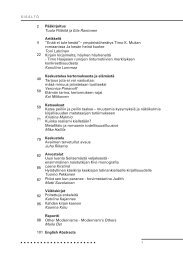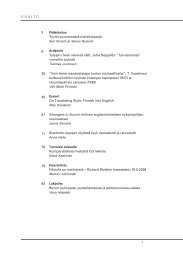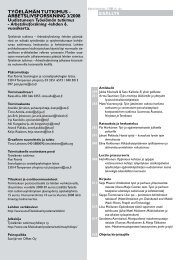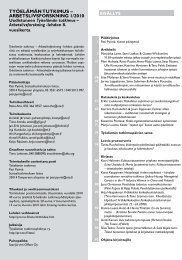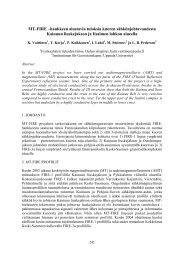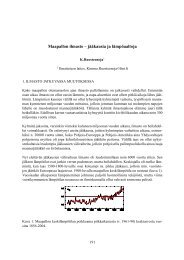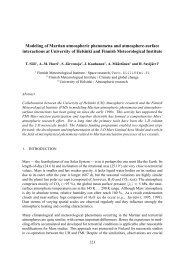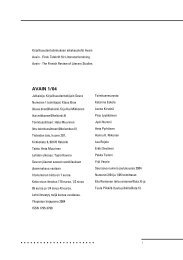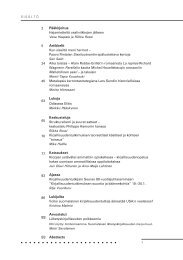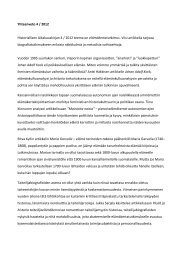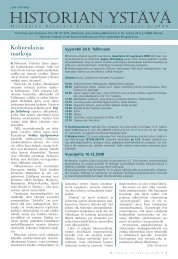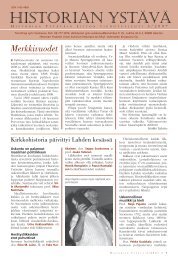Avain 4/2010
Avain 4/2010
Avain 4/2010
You also want an ePaper? Increase the reach of your titles
YUMPU automatically turns print PDFs into web optimized ePapers that Google loves.
84<br />
The Man Who Keeps Losing His Way<br />
Queer Intertextuality and Gothic Motives in Alan<br />
Hollinghurst’s The Folding Star<br />
Kirjallisuudentutkimuksen aikakauslehti AVAIN • <strong>2010</strong> • 4<br />
A B S T R A C T S<br />
The present article examines The Folding Star (1994), the second novel of Alan<br />
Hollinghurst, a contemporary British author renowned for his portrayal of modern<br />
urban gay life from the post-closet era gay male point of view. The article focuses on<br />
this critically somewhat neglected novel located in the Belgian city of Bruges, famous<br />
for its mediaeval architecture as well as for its role as the main locus of the Belgian<br />
Symbolist art and literature. In particular, the article studies Hollinghurst’s intertextually<br />
rich novel by investigating its Gothic and Symbolist motives and intertexts<br />
in queer theoretical context, and by exploring the Gothic as a malleable literary tool<br />
for discussing the various forms of desire and sexuality questioning heteronormative<br />
structures. The article at hand focuses on representations of male homosexuality<br />
reclaiming not only the pastoral but also the Gothic, and even more the underlying<br />
Gothic features of the Symbolism manifested in The Folding Star.<br />
Gothic fiction with its hyperbolic nature is not the first literary genre to be<br />
associated with Hollinghurst’s erudite, exquisitely composed prose. Nonetheless, as a<br />
literary form, Gothic writing is a malleable critical concept and not without relevance<br />
to one of Hollinghurst’s novels. By investigating the noticeably Gothic elements in the<br />
novel, the article discusses The Folding Star focusing on the Gothic as a literary mode,<br />
examining the intertextual strategies employed in the novel. Gothic fiction has offered a<br />
rich field of study for critics investigating literary representation of sexuality – especially<br />
non-normative sexuality. Gothic fiction developed simultaneously with the formation<br />
of the presently known categories of gender and sexuality. Consequently, Romantic and<br />
Gothic writing as well as pastoral have recently been more and more often examined<br />
together with the notion of queer. The present article advances this vivid discussion<br />
by extending its examination to the interplay of Gothic and distinctively Symbolist<br />
features of the novel.<br />
Pia Livia Hekanaho




